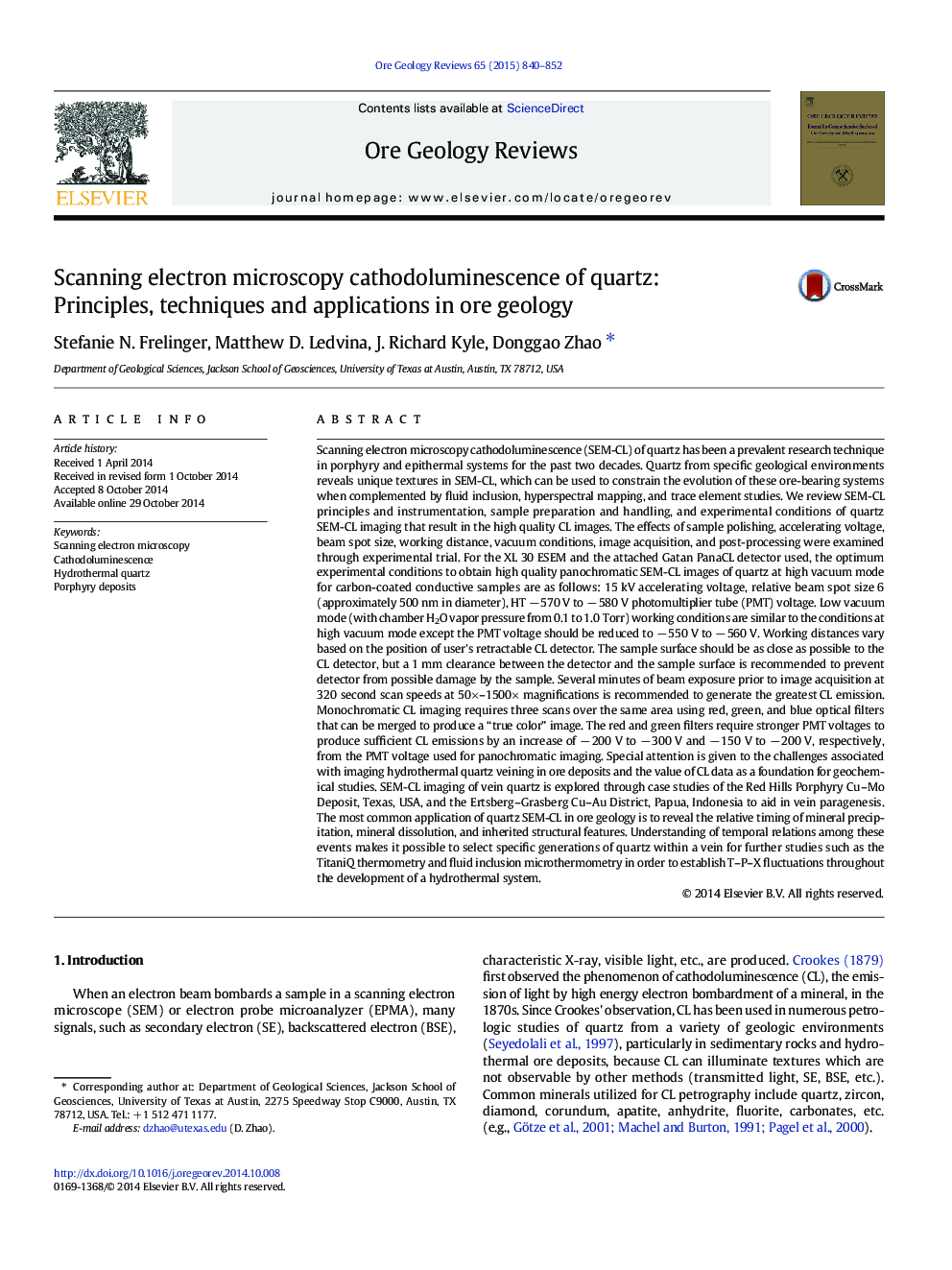| کد مقاله | کد نشریه | سال انتشار | مقاله انگلیسی | نسخه تمام متن |
|---|---|---|---|---|
| 4697146 | 1351864 | 2015 | 13 صفحه PDF | دانلود رایگان |
Scanning electron microscopy cathodoluminescence (SEM-CL) of quartz has been a prevalent research technique in porphyry and epithermal systems for the past two decades. Quartz from specific geological environments reveals unique textures in SEM-CL, which can be used to constrain the evolution of these ore-bearing systems when complemented by fluid inclusion, hyperspectral mapping, and trace element studies. We review SEM-CL principles and instrumentation, sample preparation and handling, and experimental conditions of quartz SEM-CL imaging that result in the high quality CL images. The effects of sample polishing, accelerating voltage, beam spot size, working distance, vacuum conditions, image acquisition, and post-processing were examined through experimental trial. For the XL 30 ESEM and the attached Gatan PanaCL detector used, the optimum experimental conditions to obtain high quality panochromatic SEM-CL images of quartz at high vacuum mode for carbon-coated conductive samples are as follows: 15 kV accelerating voltage, relative beam spot size 6 (approximately 500 nm in diameter), HT − 570 V to − 580 V photomultiplier tube (PMT) voltage. Low vacuum mode (with chamber H2O vapor pressure from 0.1 to 1.0 Torr) working conditions are similar to the conditions at high vacuum mode except the PMT voltage should be reduced to − 550 V to − 560 V. Working distances vary based on the position of user's retractable CL detector. The sample surface should be as close as possible to the CL detector, but a 1 mm clearance between the detector and the sample surface is recommended to prevent detector from possible damage by the sample. Several minutes of beam exposure prior to image acquisition at 320 second scan speeds at 50×–1500× magnifications is recommended to generate the greatest CL emission. Monochromatic CL imaging requires three scans over the same area using red, green, and blue optical filters that can be merged to produce a “true color” image. The red and green filters require stronger PMT voltages to produce sufficient CL emissions by an increase of − 200 V to − 300 V and − 150 V to − 200 V, respectively, from the PMT voltage used for panochromatic imaging. Special attention is given to the challenges associated with imaging hydrothermal quartz veining in ore deposits and the value of CL data as a foundation for geochemical studies. SEM-CL imaging of vein quartz is explored through case studies of the Red Hills Porphyry Cu –Mo Deposit, Texas, USA, and the Ertsberg–Grasberg Cu–Au District, Papua, Indonesia to aid in vein paragenesis. The most common application of quartz SEM-CL in ore geology is to reveal the relative timing of mineral precipitation, mineral dissolution, and inherited structural features. Understanding of temporal relations among these events makes it possible to select specific generations of quartz within a vein for further studies such as the TitaniQ thermometry and fluid inclusion microthermometry in order to establish T–P–X fluctuations throughout the development of a hydrothermal system.
Journal: Ore Geology Reviews - Volume 65, Part 4, March 2015, Pages 840–852
